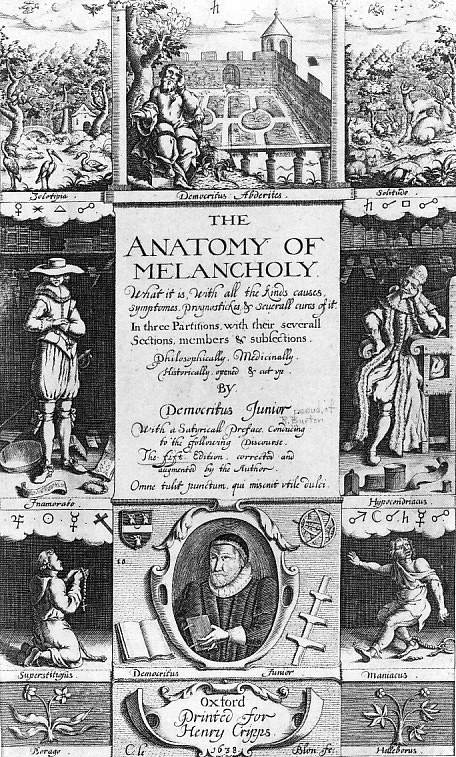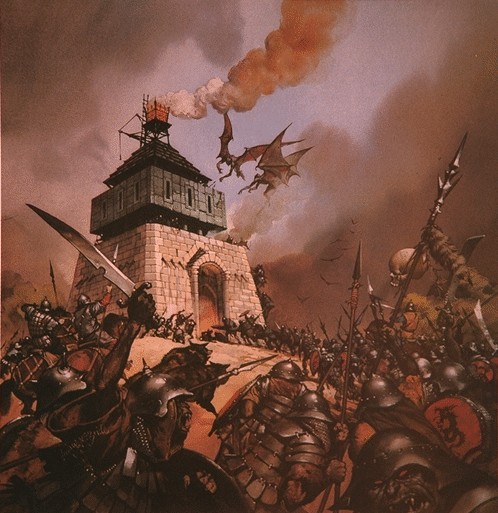Welcome, as always, dear readers.
The title of this essay is derived from a technique in heroic literature, in which, in some way, the story/song ends, more or less where it began, just like a ring—or the Midgard Serpent, which encircles the earth in Norse mythology.

Thinking about ring composition made us think, of course, about the Ring

and to ask ourselves a question about the composition of The Lord of the Rings: where did the idea of a powerful ring come from?
There has been a lot of scholarly work about what influenced JRRT, some of which he himself agreed with, some he did not. For instance, the suggestion that Richard Wagner’s (1813-1883)

huge 4-opera cycle, Der Ring des Nibelungen, “The Ring of the Nibelung” (1848-1874)

might have provided a spark was vigorously dismissed by Tolkien—although, to our minds, there is a certain similarity—the ring of the title is a magical one, after all, whose power would allow the owner to rule the world—but it’s accursed and only brings unhappiness—or worse– to anyone who possesses it. And yet characters in the four operas which make up the cycle struggle over its possession. There, however, the similarity ends. The maker of the ring isn’t a semi-divine figure who’s attempting to rebuild his kingdom through a combination of his magical powers and his political abilities, but, rather, a dwarf, named Alberich, who has stolen the gold from which the ring is made from the Rhine Maidens, and, in return, Alberich must give up love, which he renounces.

He soon loses the ring and there is no parallel with the Shire, or with hobbits: this is a world with gods and heroes, all larger-than-life, and Sam, in particular, would feel very out of place here. Just contrast the Hildebrandts’ Frodo and Sam meeting Faramir with this children’s theatre character sheet depicting the figures from the last of the four operas, Goetterdaemmerung, “The Gods’ Twilight”.


We would suggest that a stronger influence might be found in JRRT’s interest in Old English literature. In that literature, Anglo-Saxon kings and lords are known as “ring-givers” and “gold-givers”,



who reward their followers—as well as singers—with precious decorations–as the poet in the poem called Widsith tells us:
Likewise I was among the Eatula with Ælfwine,
he had the lightest hand of all mankind, as I have heard,
to perform his praises, the most generous in the sharing of rings,
the bright bracelets, the child of Eadwine. (68-74)
(translation by Prof. Aaron K. Hostetter of Rutgers University, Camden—here’s a LINK so that you can read the whole poem—and much more—at his website—he has a wonderful project to translate a mass of Old English literature and has done a great deal to make it all accessible in one place. As for Widsith, there’s a very useful Wiki article, if you’re interested. Here’s a LINK to it.)
Whereas there might be some distant influence in the making of a powerful ring in Wagner’s operas, the giving of rings makes us think of Sauron, when he reappears in the Second Age. At that time, he comes in the guise of “Annatar”, “Lord of Gifts” and, to gain power over the Elves, encourages them to make rings, all the while creating his own to overpower and master them. As his power grows, he collects all of the rings he can (he never succeeds in getting the last three Elven rings) and doles them out, like those Anglo-Saxon kings and lords, to attempt to control dwarves and men, as well:
“But Sauron gathered into his hands all the remaining Rings of Power; and he dealt them out to the other peoples of Middle-earth, hoping thus to bring under his sway all those that desired secret power beyond the measure of their kind.” (The Silmarillion, 288)
The theme in both Wagner and The Silmarillion is that of supernatural control through what appears to be a rather ordinary object, a ring, something which, when Bilbo first finds it, is described as nothing more than “a tiny ring of cold metal” (The Hobbit, Chapter 5, “Riddles in the Dark”). Tolkien may have been influenced by its appearance in opera, and more likely, by the use of rings in Old English, but there is an older possibility:
“Outside school-room hours his mother gave him plenty of story-books…The Arthurian legends also excited him. But most of all he found delight in the Fairy Books of Andrew Lang, especially the Red Fairy Book, for tucked away in its closing pages was the best story he had ever read. This was the tale of Sigurd who slew the dragon Fafnir: a strange and powerful tale set in the nameless North.” (Carpenter, J.R.R. Tolkien, A Biography, 31)
Andrew Lang (1844-1912),

who might be considered a perfect example of the Victorian literary figure, having written novels, poems, criticism, travelogues, and early anthropological works, had also begun publishing a series of collections of stories for children, each one of the series being bound in a different color.

His wife, Leonora Blanche Alleyne (1851-1933), did most of the editing after the initial volumes, publishing, in all, a dozen volumes between 1889 and 1910. The Red Fairy Book (1890) was the second in the series

and it was in this volume that a little boy

first discovered dragons—and perhaps magic rings, as well, as in the story of Sigurd, we find:
“Now there was at that time a dwarf called Andvari, who lived in a pool beneath a waterfall, and there he had hidden a great hoard of gold. And one day Otter had been fishing there, and had killed a salmon and eaten it, and was sleeping, like an otter, on a stone. Then someone came by, and threw a stone at the otter and killed it, and flayed off the skin, and took it to the house of Otter’s father. Then he knew his son was dead, and to punish the person who had killed him he said he must have the Otter’s skin filled with gold, and covered all over with red gold, or it should go worse with him. Then the person who had killed Otter went down and caught the Dwarf who owned all the treasure and took it from him.
Only one ring was left, which the Dwarf wore, and even that was taken from him.
Then the poor Dwarf was very angry, and he prayed that the gold might never bring any but bad luck to all the men who might own it, for ever.” (Lang, editor, “The Story of Sigurd”)
And this is not the only ring to be found in The Red Fairy Book.
In the “Draft of a letter to ‘Mr. Rang’ ”, dated by Tolkien as “Aug. 1967”, JRRT has this to say about the origin of the name Moria:
“In fact this first appeared in The Hobbit chap.1. It was there, as I remember, a casual ‘echo’ of Soria Moria Castle in one of the Scandinavian tales translated by Dasent. (The tale had no interest for me: I had already forgotten it and have never since looked at it…)” (Letters, 384)
The “Dasent” mentioned here is Sir George Webbe Dasent (1817-1896), lawyer, civil servant, and sometime professor of English Literature and Modern History at King’s College, London, who, in 1859, had published Popular Tales from the Norse, a translation from the Norwegian of a series of pamphlets and books by Asbjornsen and Moe under the general title “Norske Folkeeventyr” (“Norse Folktales”), published between 1841 and 1871. By the third edition (1888), Dasent had added, among other works, a story entitled “Soria Moria Castle”. Tolkien may have seen any one of the several different editions of this work as an adult, but, as a child, he would have first read “Soria Moria Castle” in the same Red Fairy Book in which he had encountered Sigurd and the dragon. (Here’s a LINK to the Lang if you would like to see the two stories as JRRT would have.)
Beyond the title and its hint of Dwarfish mines, however, there is also a magic ring to be found in this story, given to the hero, Halvor, by three princesses whom he has rescued from trolls:
“Then they dressed him so splendidly that he was like a King’s son; and they put a ring on his finger, and it was one which would enable him to go there and back again by wishing, but they told him that he must not throw it away, or name their names; for if he did, all his magnificence would be at an end, and then he would never see them more.” (“Soria Moria Castle”)
JRRT was born in 1893. We don’t know exactly when his mother may have handed him Lang’s collection, but it was in childhood, according to his own recollection. Thus, the Ring—disguised as a ring—may have entered his life long before he heard an opera, or studied an earlier form of his native language.
The Lord of the Rings has a ring in its composition and we began this posting with talk of ring composition, but now we’re going to conclude by breaking loose from that ring by suggesting that perhaps that was the ultimate purpose in the original choice of the Ring for JRRT: to symbolize completion not by circling back, but by the breaking of a seemingly unbreakable circle. Sauron, once the servant of Melkor, but having great power of his own, has used that power not only to return and return through the ages from defeat, but to fashion a master ring, one which controls all others, giving him even more strength. At the same time, it had required such strength to make such a ring that, at its destruction:
“ ‘The realm of Sauron is ended!’ said Gandalf. ‘The Ring-bearer has fulfilled his Quest.’ And as the Captains gazed south to the Land of Mordor, it seemed to them that, black against the pall of cloud, there rose a huge shape of shadow, impenetrable, lightning-crowned, filling all the sky. Enormous it reared above the world, and stretched out towards them a vast, threatening hand, terrible but impotent: for even as it leaned over them, a great wind took it, and it was all blown away, and passed; and then a hush fell.” (The Return of the King, Book Six, Chapter 4, “The Field of Cormallen”)

(Another wonderful illustration by one of our favorite Tolkien illustrators, Ted Nasmith)
As Gandalf has said of the Ring:
“If it is destroyed, then he will fall, and his fall will be so low that none can foresee his arising ever again. For he will lose the best part of the strength that was native to him in his beginning, and all that was made or begun with that power will crumble, and he will be maimed for ever, becoming a mere spirit of malice that gnaws itself in the shadows, but cannot again grow or take shape. And so a great evil of this world will be removed.” (The Return of the King, Book Five, Chapter 9, “The Last Debate”)
Thus, after the Ring was destroyed, so was the ring of Sauron’s return in age after age, bringing about what we might then call “ring de-composition”and the story ends not where it began, but going towards old places—the Grey Havens and beyond—for some, and new places—the Fourth Age—for others.
Thanks, as ever, for reading.
MTCIDC
CD
ps
Can we resist saying one thing more? JRRT couldn’t—but was he thinking of a teaser for a sequel when Gandalf added to what he’d said above:
“Other evils there are that may come; for Sauron is himself but a servant or emissary.”?


































































































































































































